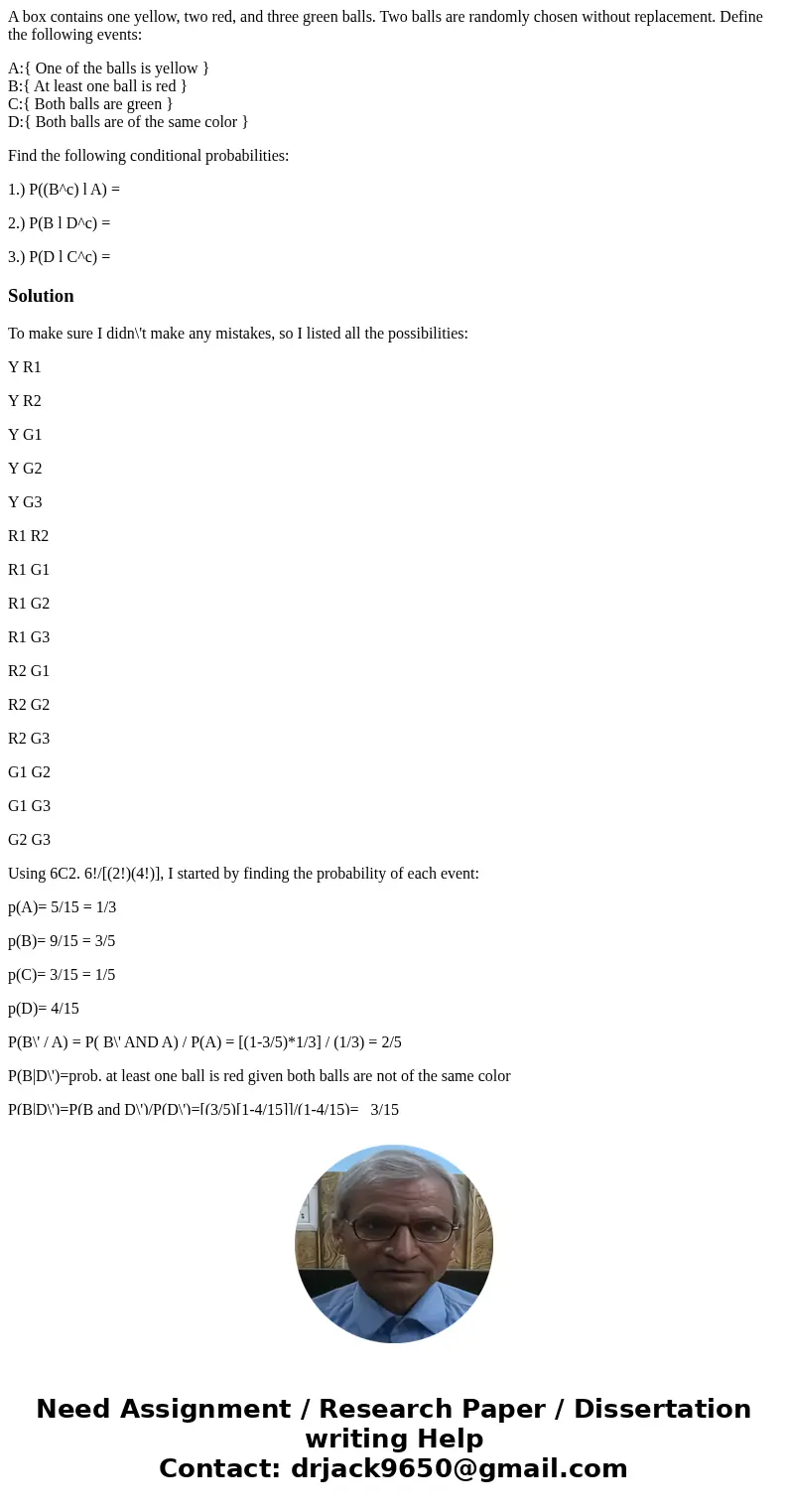A box contains one yellow two red and three green balls Two
A box contains one yellow, two red, and three green balls. Two balls are randomly chosen without replacement. Define the following events:
A:{ One of the balls is yellow }
B:{ At least one ball is red }
C:{ Both balls are green }
D:{ Both balls are of the same color }
Find the following conditional probabilities:
1.) P((B^c) l A) =
2.) P(B l D^c) =
3.) P(D l C^c) =
Solution
To make sure I didn\'t make any mistakes, so I listed all the possibilities:
Y R1
Y R2
Y G1
Y G2
Y G3
R1 R2
R1 G1
R1 G2
R1 G3
R2 G1
R2 G2
R2 G3
G1 G2
G1 G3
G2 G3
Using 6C2. 6!/[(2!)(4!)], I started by finding the probability of each event:
p(A)= 5/15 = 1/3
p(B)= 9/15 = 3/5
p(C)= 3/15 = 1/5
p(D)= 4/15
P(B\' / A) = P( B\' AND A) / P(A) = [(1-3/5)*1/3] / (1/3) = 2/5
P(B|D\')=prob. at least one ball is red given both balls are not of the same color
P(B|D\')=P(B and D\')/P(D\')=[(3/5)[1-4/15]]/(1-4/15)= 3/15
P(D|C\')=prob both are same color given none are green
P(D|C\')=P(D and C\')/P(C\')
P(D and C\')=prob. both are same and not green. They can only be both red then. Because there is only one yellow.
The prob. they are both red is 1/15
prob. not green is they both have to be red, or one yellow and one red. 1/5
(1/15)/(1/5)=1/3

 Homework Sourse
Homework Sourse